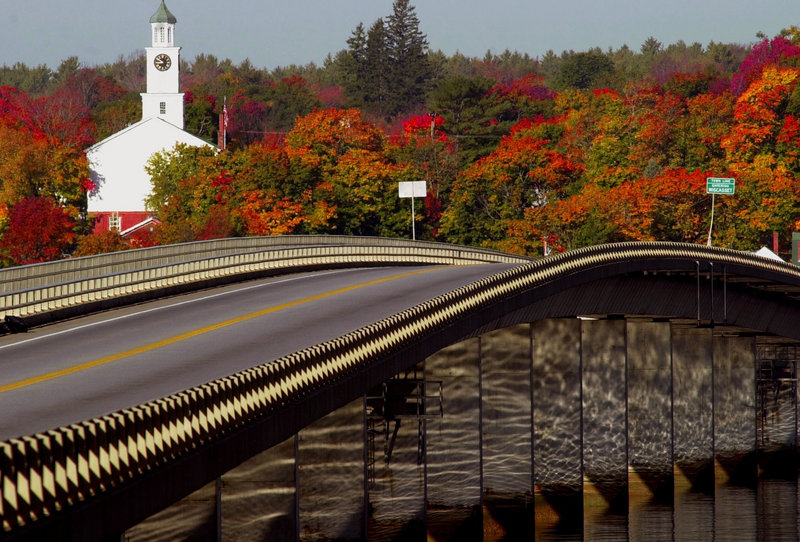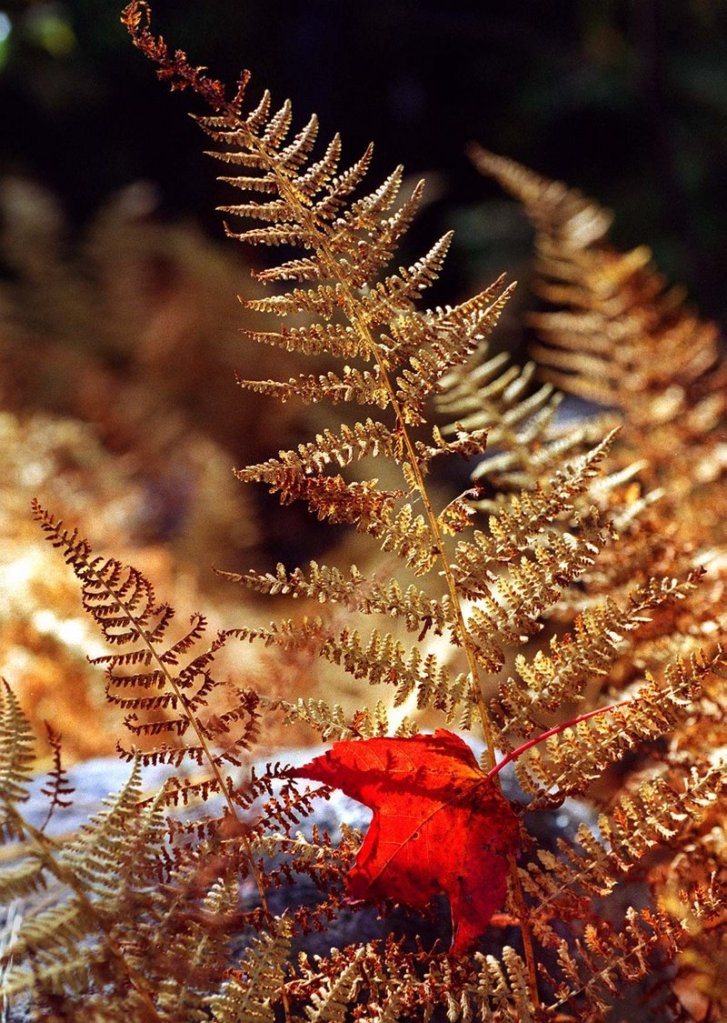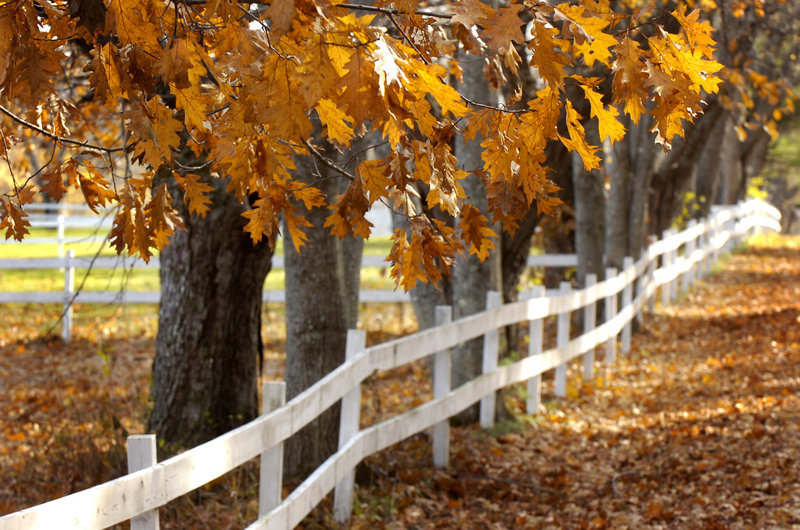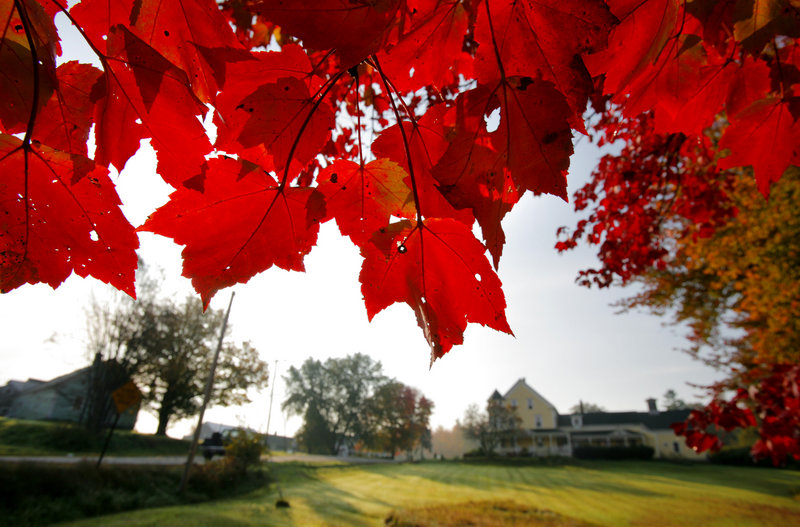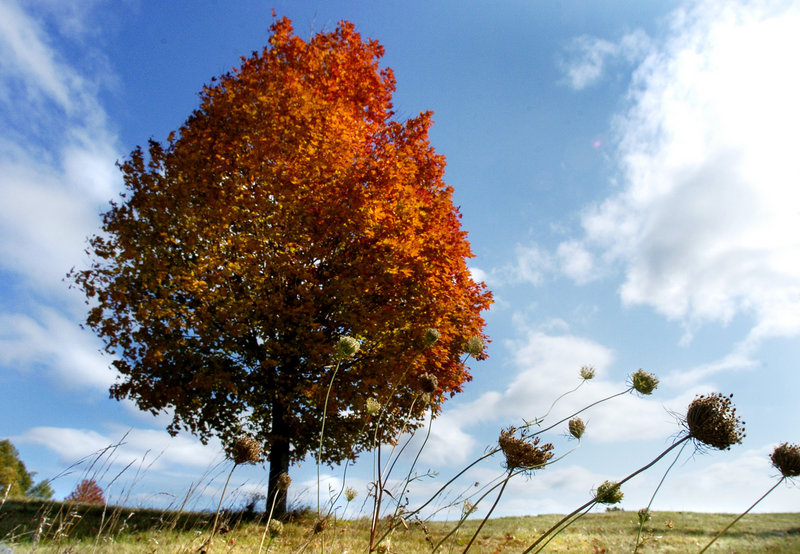The bottom line, leaf lovers, is that we’re on schedule to have a plentiful and colorful fall foliage show throughout Maine this year.
But the specifics are a little more of a gray area.
Take, for example, the weather. Yes, we had some really wet periods, like in May.
Wet weather can be bad for leaves. But it can also be good for leaves.
The wet weather was bad because it helped create perfect conditions for the spread of a fungi-related malady called anthracnose, said Bill Ostrofsky, a forest pathologist with the Maine Forest Service.
The spread of anthracnose — which causes leaves to blacken — has also caused some trees to lose leaves early. As early as late summer. And some trees weakened by anthracnose lost their leaves when Tropical Storm Irene blew through in late August.
But the number of places where anthracnose has caused a lot of leaves to drop is not really going to be noticeable when you’re talking about going on a foliage drive and looking for sweeping vistas.
“In your neighborhood, where you see the same trees all year, you might be able to notice it,” said Ostrofsky. “But when you’re talking about looking for colorful vistas, it won’t make a difference.”
The good part of the wet weather we had this year, said Ostrofsky, is that in areas where trees have all their leaves, the leaves should be good and healthy.
A healthy leaf is a colorful leaf, Ostrofsky says.
“We’ve had great moisture, and that leads to really nice leaf development,” he said. “When you have dry conditions, the leaf colors can look washed out.”
So far, Maine Forest Service rangers who scour the state for signs of color feel that we are right on schedule for a typical fall foliage season, said Gale Ross, who compiles the weekly online foliage reports for the state (MaineFoliage.com).
As of Thursday, MaineFoliage.com was reporting 50 to 70 percent color in much of the northern half of the state. This “high” color had spread as far south as Eustis, Greenville and an area northeast of Bangor. A swath across the middle of Maine was reported as having 30 to 50 percent color (Bethel to Calais, roughly), while southern and coastal areas were at about 10 to 30 percent color.
Rangers from all over Maine talk to Ross weekly, and even send her pictures of what they see. She said she had just talked to a ranger who had flown over northern Maine in a helicopter, and she talked to another ranger in Machias who said things there were still green. Which is good, because the coast usually gets color later.
“We seem to be right on schedule for our typical peaks, meaning down where you are (Portland), you might have peak color as late as (the week of ) Oct. 17, and in the western mountains, we might see peak around Columbus Day,” said Ross.
Peak color periods can vary from year to year. Last year, Zone 2 — which is the Down East coast — had peak color on Oct. 20, but had it on Oct. 15 the year before.
Southern coastal Maine has had peak color pretty consistently the last three years — on Oct. 20, 21 and 18.
The MaineFoliage.com website lists the dates of peak color in the state’s various foliage zones over the past 10 years, so you can take a look and make a pretty good guess about when peaks might be this year.
The site also lists your best bets for seeing good fall color in various areas of the state, based on the historical peak color data.
For instance, if you’re going looking for color today, you’ll likely find peak conditions in mountain and northern central locations, such as Route 17 near Rangeley, Mount Blue State Park in Weld, Moosehead Lake or Dover-Foxcroft.
Next weekend would be a good time to look for color in the western mountains around Bethel, or from Farmington to Augusta.
And sometime between Oct. 13 and Oct. 19, there will likely be peak color in southern and coastal Maine, from Bridgton to Portland and from York to Waterboro.
Peter Lammert, a longtime tree expert with the Maine Forest Service, recommends that on your foliage drives, you get out and walk around in the fallen leaves.
They may not be as spectacular to look at, but are just as wondrous.
“I love to look at the leaf litter, and how all those leaves make topsoil and feed the trees,” said Lammert.
“After all the years I’ve been working with trees (more than 50), they still amaze me.”
Staff Writer Ray Routhier can be contacted at 791-6454 or at:
rrouthier@pressherald.com
Send questions/comments to the editors.


